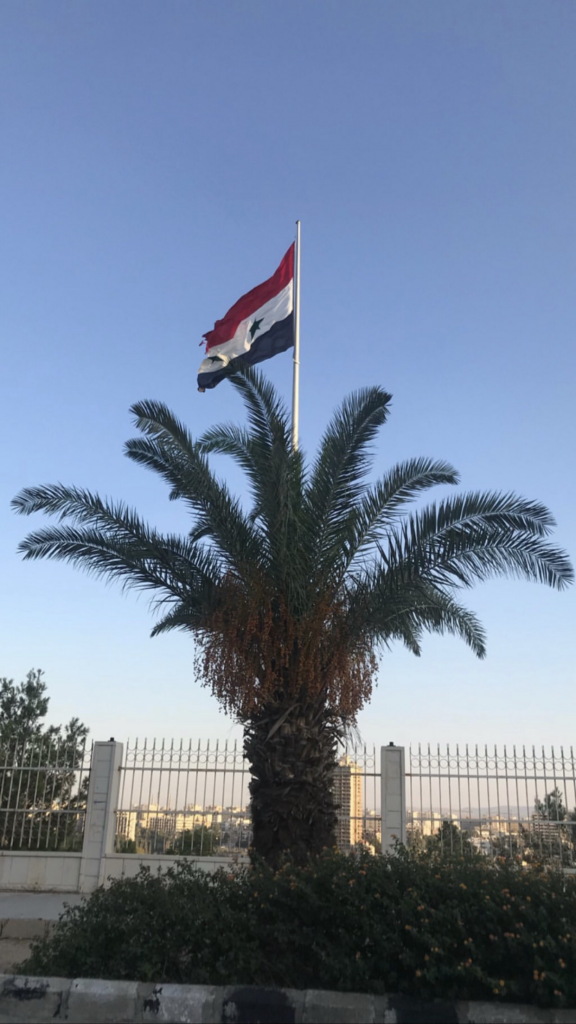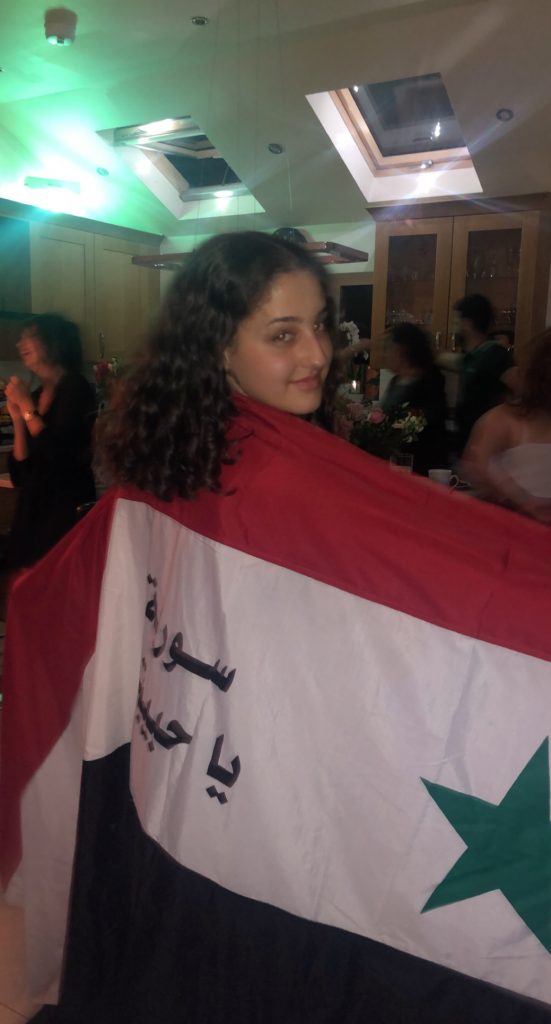11/12/2024 By Daniella Daoud
Conflict not only in my own country but also within myself. It is like being caught between two worlds.
Growing up as a Syrian/Arab girl in London, it felt like living in two parallel universes. At home, I was expected to uphold my heritage’s customs and ideals, which included a rich history, family relationships and expectations. But outside of that, the Western world expected a different version of myself, one who adhered to standards and beliefs that were completely opposite. The two realities rarely merged seamlessly, leaving me torn between who I was and where exactly I belong.
Being young and experiencing an identity crisis is not uncommon, especially for those who are straddling multiple cultures. For me it was not about balancing two identities, it was about the never-ending feeling of never being “enough.” The persistency of not being “Arab enough” for my culture, where my Western habits were often scrutinised, nor was I” English enough” for a society that considered me as an outsider first before anything else. This tension influenced my formative years in ways that I am just now beginning to understand.
Home was where I was frequently reminded, lovingly but very firmly, of the ideals I was supposed to keep up. Arabic was always the preferred language, and I was urged to speak it fluently. Let me just say it simply, Arabic school every Saturday for more than a decade. I am lucky enough to say that it brought me girl who I see as my sisters, however it was difficult because English has naturally become my dominative tongue. Family gatherings were filled with warmth that I adored and kept close to my heart, but they also contained hidden expectations about behaviour, modesty, and respect for elders. Especially the day and nights in Syria.

My parents were understanding in many respects, but there was always an invisible border that I could not cross. Wearing shorts too short, expressing thoughts too loudly, or asking questions too openly because it may result in disappointment by family members or a chat about keeping “true to our roots.” I have always cherished my background, which intensified with age but could not shake the feeling of being an outsider even within my own culture. My lack of Arabic fluency made me feel like an imposter at times, especially when I would pronounce a word “two white.” My western interests in music, clothes and lifestyle distinguished me from cousins who seemed to embody “arabness” with ease.
If home felt out of place, adjusting to life in the Western world was no easier. Primary school was a struggle (with it being predominantly white) where I tried navigating the complexities of fitting in while remaining true to the principles ingrained in me. “Friends” would make jokes about my packed lunches smelling “weird.” It was clear that my identity as an Arab girl had preceded me, influencing how other perceived me before I even had the chance to identity myself.
Beauty. Another layer of my insecurity, not just cultural misunderstandings. I never felt like I fit into the Western beauty standards that were always around me. Blonde, straight hair, blue eyes and pale complexion were portrayed as the pinnacle of beautiful whereas my features felt out of place. At the same time, I didn’t meet the beauty standards of my own society either. The beauty ideals of Arab girls were frequently emphasised as long, dark, rich hair, sharp features, and a polished femininity that I lacked. My hair was never perfect. Always big, frizzy, knotty, and never looked brushed. Always straightening my beautiful curls. I found myself locked in an exhausting cycle at such a youthful age. Too “different” not suit the Western standards and too “Westernised” to suit Arab expectations. The worry of being attractive to boys in my year. It always felt completely out of reach.

Over time I realised that I was struggling not only with culture, but also with the in-between area I was occupying. It was a liminal space which many first-generation children and immigrants are all too familiar with. It is a place where you are continuously shape shifting, adjusting to one realm while never really leaving another. This place of unknown brought its own sense of loneliness. It now existent version of myself. Looking for someone who could be entirely Arab attempting to be everything, I frequently felt as if I were nothing.
The turning point for me was when I met others, young like me and were having similar experiences juggling dual identities. These people who I met through church and Arabic school became my family. Through our deep conversations and shared experiences, we all realised that our identities were not something we had to “fix” or perfect. Instead, it was something we could embrace, despite its contradictions.
Part of this process had me reframing what beauty meant to me. Essentially finding who I really am. I came to perceive beauty as more than just superficial characteristics or cultural validation. Beauty became about confidence, about embracing the pieces of myself that I was trying to hide away. It was in the stories, my skin told, the power of my voice, and the endurance that comes with living in two worlds.
I started to see all the flaws that I had previously looked down on, were sources of strength and uniqueness. I began to establish my own definition of beauty, one based on genuine so and self-acceptance, as I no longer as the need to live up to those Arab and Western standards.
My tale is just one of many. Countless young people around the world are facing similar challenges of identity and belonging. Whether it’s a South Asian boy in Canada or a Nigerian girl in France, the experience of navigating cultures is universal in its complexity. I am lucky enough to have heard my friend Yasmina Haddad, who also struggled with straddling dual identities, her being Lebanese living in London. She expressed, “Growing up in London, I was surrounded by Western culture, but at home, I lived in a deeply Arab household with our traditions, language, and values. At times, I found it challenging to reconcile the differences between the two. For instance, when I was younger, I sometimes felt like I had to tone down or hide my Arab identity to blend in with my peers. However, as I grew older, I realized that being both Arab and Western was something to celebrate, not something to feel conflicted about. Embracing both sides has been a journey of self-discovery, and I am proud of how my dual identity has shaped who I am.”
These stories are important because they question the idea that identity is static or singular. They emphasise that identity is flexible, diverse, and intensely personal. In a world that often demands simplicity, these stories require nuance and empathy.
If there is one thing that I have learnt so far, it is that the voyage of self-discovery is never completely over. There will always be moments when I feel out of pace and wonder where I belong. However, there will be times of clarity and connection, reminding me that my identity is a gift rather than a burden. Being Arab and Western has given me a unique perspective on the world. It has taught me resilience, adaptation, and the joy of holding different realities simultaneously. While the path has not been easy, I would not change it for the world.
In the end, I have come to see my identity not as a crisis, but as a story. A story that continues to evolve, with all its messiness and magic intact.